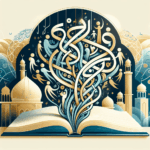The Modern Standard Arabic Alphabet: A Linguistic Overview
The Arabic language is a beautiful tapestry of history, culture, and linguistic elegance. One of its most fascinating components is the Modern Standard Arabic (MSA) alphabet. Whether you’re a language enthusiast or simply curious about this globally significant script, understanding the Arabic alphabet can be both rewarding and intriguing. Let’s dive into this captivating subject! 🌍
Table of Contents
1. Introduction to the Arabic Alphabet
2. The Structure of the Arabic Alphabet
3. Unique Features of Arabic Script
4. The Role of Vowels in Arabic
5. Conclusion
6. FAQ
Introduction to the Arabic Alphabet
The Arabic alphabet is not just a means of communication; it’s a window into the rich cultural and historical heritage of the Arab world. Used by over 420 million people worldwide, it forms the foundation of Modern Standard Arabic, which is the standardized and literary variety of Arabic used in writing and formal speech.
The Structure of the Arabic Alphabet 📚
The Arabic alphabet consists of 28 letters, each with a unique shape that changes depending on its position in a word. Unlike the Roman alphabet, Arabic is written from right to left, which can be a fun twist for those used to left-to-right scripts. Here’s a quick breakdown of some essential features:
Consonants: The Arabic alphabet is primarily composed of consonants. Each letter can represent different sounds, depending on its context.
Forms of Letters: Each letter can appear in up to four forms: isolated, initial, medial, and final. This adaptability allows for smooth connection between letters within words.
Unique Features of Arabic Script ✨
One of the most distinctive features of the Arabic script is its cursive nature. This continuous flow of writing makes it aesthetically pleasing and, at times, challenging for beginners. Here are a few unique features worth noting:
Diacritical Marks: These are small symbols placed above or below the letters to indicate short vowels or other phonetic nuances. They are crucial for proper pronunciation and comprehension.
Ligatures: Certain combinations of letters form unique shapes, known as ligatures. The most famous ligature is the combination of the letters „ل“ (Lam) and „ا“ (Alif), which appears as „لا“.
The Role of Vowels in Arabic 🔤
Unlike English, where vowels are integral parts of the alphabet, Arabic uses diacritical marks to represent short vowels. These marks are optional in most texts, meaning that readers familiar with Arabic often rely on context to identify the vowels. However, in educational materials and religious texts, these marks are usually included to aid in proper pronunciation.
Conclusion
The Modern Standard Arabic alphabet is a fascinating subject that opens doors to understanding a language rich in history and culture. While it may seem complex at first glance, the beauty and logic of the script are undeniable. Whether you’re learning Arabic for personal enrichment or professional reasons, embracing the alphabet is a crucial step in your linguistic journey.
FAQ
Q: How many letters are there in the Arabic alphabet?
A: The Arabic alphabet consists of 28 letters.
Q: Is Arabic written from left to right?
A: No, Arabic is written from right to left.
Q: What are diacritical marks in Arabic?
A: Diacritical marks are symbols used to indicate short vowels and other phonetic details.
Q: Are vowels part of the Arabic alphabet?
A: Vowels are not part of the alphabet; they are represented by diacritical marks.
Q: What is a common ligature in Arabic script?
A: A common ligature is the combination of „ل“ (Lam) and „ا“ (Alif), which forms „لا“.






